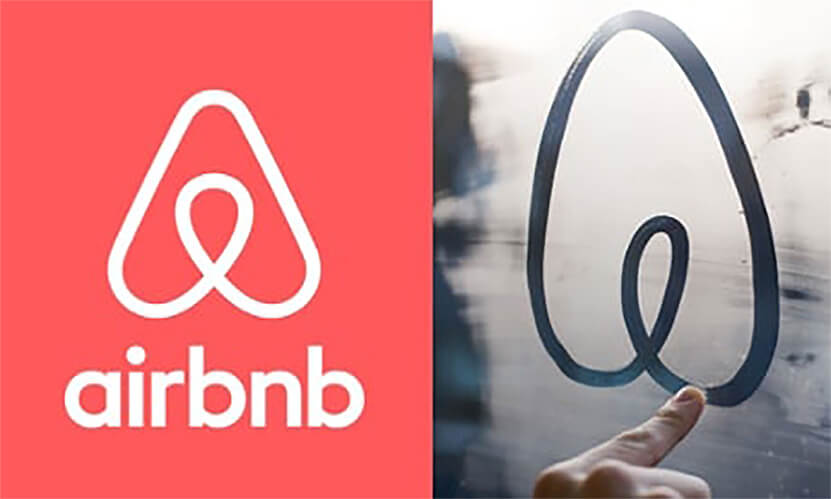If you’ve seen the news announcements about the Airbnb’s Rebranding, then you know that the Airbnb’s Belo symbol has received public criticism, especially from the design community, about the new logo. In particular, the suggestion that the new symbol — known as the Belo (a visual representation of the concept “Belong Anywhere”) resembles sexual organs and body parts. In addition, the logo seems to be a rip-off of another company’s logo — a technology company called Automation Anywhere. According to BBC News article on the subject, Ben Wright, the founder of DesignStudio (the firm responsible for the new logo) was not “aware [of the sexual connotations].”
This post is a month overdue. However, I decided to hold off before pronouncing my opinion about Airbnb’s rebranding. Rather than jumping on the bandwagon with poking fun at the new logo, this post is taking a different angle on the subject. It’s not about agreeing or disagreeing with the interpretations of the design. Nor, will I use this opportunity to remind small businesses to never copy another company’s brand to avoid public humiliation or social media backlash. Instead, I want to explore how to respond to a situation where other people have something negative to say about your new brand after launching it.
- Respond by listening to your audiences. I applaud their response to involve it’s audiences in the Airbnb’s Rebranding process. Mr. Ben Wright, founder, mentioned in a BBC News article: “Despite the criticism and jokes, Mr. Ben Wright said he and his team still believed it was a good idea to ask the public to adapt the logo, noting that it was the top trending item on Twitter for a time.” Consistent with their brand philosophy centered on “belonging,” the idea of engaging with the community is a great way to reinforce who they are as a company.However, as a word of caution: remember that design is highly subjective. Inevitably, you will receive varying opinions about what looks good and what doesn’t for your brand. You should be prepared that there will always be someone (or a group of people) who will have something negative to say about your brand.Remember, design is like art. Beauty is in the eye of the beholder. The problem is that most people don’t have a strong design eye. That’s why branding agencies and graphic designers exist. If everyone understood branding and design principles, then there wouldn’t be the need to hire a branding agency. Similarly, if everyone understood accounting, financial modeling, or interior design, then we wouldn’t need the need to hire those professionals. On the one hand, listen to what your audiences have to say, but also make sure you stick with the brand strategy.Should you decide to adapt the logo, be mindful that the worse thing you can do is conduct design-by-committee. That is, gather a bunch of people (designers and non-designers) to evaluate and making design decisions.My suggestion to Airbnb and to small businesses who may face the same challenge: take every feedback into consideration, but evaluate it against the brand strategy (not everyone has a “design eye”). In doing so, you will prevent creating another issue known as “design Frankenstein.”
- Stay confident in who you are and what you stand for. Creating a brand is a lifestyle. It’s not an overnight discipline. As a branding agency, we are constantly evolving our own brand because the business continues to evolve. We keep abreast of trends. We’re fine-tuning our target audiences. We’re expanding our reach and the vision for small businesses and entrepreneurs. But, our brand is still the same. Recently, a client confides in me: “I don’t like the fonts of your logo.” If I wasn’t confident in who we are as a company or if I wasn’t clear on my brand, I would guess that I would either be hurt by the feedback OR change the font. Neither happened. I’m just confident that the fonts we use are a strong representation of our overall story.Confidence in who you are (and who you’re not) will trump the immediate reactions people have with your new brand. Confidence will go a long way.We’re likely to buy from brands and people who display confidence. Adweek’s article interviewed Brand Union, a top branding agency, and Sam Becker agrees that “showing any weakness at this point would be tantamount to giving up. Once past this logo adolescence, the mark will have a chance to stand for everything Airbnb and its customers want it to.”
- Move on. Don’t put all the responsibility of your brand on your logo. Simply put — move on. If you put too much attention into what others think about your logo, you’re spending less time on carrying out the full implementation of it.I often say: “don’t put all the responsibility of your brand on your logo.” Once in a while, I see entrepreneurs putting all the responsibility of the logo to achieve everything. They want the logo to be symbolic of all aspects of their business. They want the logo to clearly articulate what they do and what they stand for. They want the logo to be locked up with a ‘tagline/slogan’.Of course, it would be ideal if a logo could accomplish all of that (symbolically, of course). However, the reality is that logos simply cannot carry all the needs of your branding. And, it’s not practical to put the burden on your logo to create your brand. Your logo is a mere fraction of your brand. There are other ingredients, such as color, photography, graphic elements, typography, copy/messaging, conversations, social media engagement, and other branding touchpoints to carry out your message.







